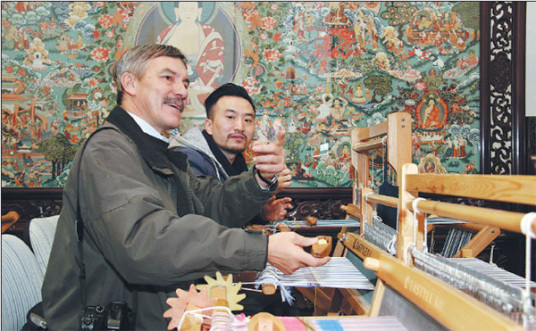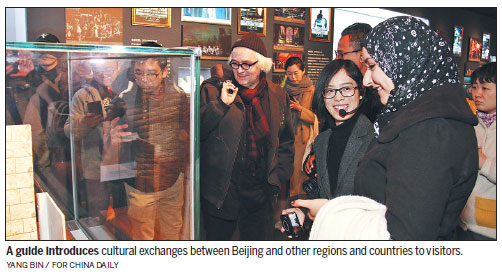Beijing's fusions of art, culture and technology entrance VIPs
City shows off its evolution from ancient creative center to modern, innovative powerhouse
The Qinglong Hutong in Beijing's Dongcheng district used to be known as a shabby, tawdry place, where many residents made a living buying and selling garbage.
Then came the art studios, painting workshops, cafes and fitness rooms - infusing the area with the light of art and creativity.
The hutong, or low-rise alleyway, has emerged after urban regeneration to become one of 20 creative and cultural clusters in Beijing, showcasing the capital's efforts to renovate backwater areas to provide space for industries that can better serve the development of the city.
Beijing's fusions of art, culture and technology entrance VIPs

The Qinglong area has already attracted companies involved in film and television, publishing, digital information and other modern services.
In the wake of the financial industry, the cultural and creative sector is now the second-largest pillar of Beijing's economy, contributing 14 percent to its GDP last year.
The category includes art performances, artworks, film production, animation and video games, advertising, media and design, as well as emerging industries such as digital publishing, virtual reality and 3D printing.
The universal appeal of such products and services struck internet celebrities, photographers, journalists and professors from nine countries during the 2018 Silk Road Rediscovery Tour of Beijing, a cultural promotional event hosted by the Beijing government's information office, last week.
One of them, Thai social media aficionado Pagon Gatchalee, mulled on this while posing for photos on a square stool at the Beijing Cultural and Creative Industry Exhibition Center. Behind him, thanks to the latest augmented reality technology, were either polar bears on an iceberg one moment - or the turbulent waters of the Yellow River the next.
"It's quite amazing that technology and culture can go hand in hand," said the man who has more than 160,000 fans on Facebook. "Beijing has such a rich culture, born of ancient times, that is developing into a modern form."
He said visitors could take in the many different facets of modern and ancient Beijing.
"If you want to learn about technology, you can go to Zhongguancun Science Park. If you are looking for commercial opportunities, you go to the CBD. If you have an interest in culture, you can take a walk at Tiananmen Square, the Forbidden City or the Houhai Lake area."
At the Beijing Cultural and Creative Industry Exhibition Center, there is a high-tech harp that uses a laser beam instead of conventional harp strings, a set of bicycles with a 3D screen in front of them that give the impression of cycling on a greenway, as well as an electric ink and wash painting whose characters can move.
Cindy Lulaby, an internet and travel celebrity from Indonesia, said she shot a short video of herself while standing at the center of a panoramic image - surrounded by glass to the right, left, top and ground - that created an immersive feeling.
"I love it. It's modern and cool. It taught me so much that I can apply in my country," she said.
"I took many photos and posted them on Instagram, (the global photo and video sharing social networking platform). They will say 'oh, what is that?' They will get inspired by the technology in Beijing."
Digby Wren, a communications and international relations professor at Deakin University in Australia, said what he saw were fusions of art, with industry and culture, in a kind of creative synergy.
"If you want something about design or engineering, you can just walk or talk. Sciences, social sciences, arts, humanities... all were gathered in a small space," he added.
At Songzhuang, an art community in Beijing's Tongzhou district, the attendees visited a ceramics workshop, silk art museum, traditional musical center and contemporary art museum.
The area has about 5,000 painters, poets, film makers and sculptors from about 20 countries, generating more than 100,000 original artworks every year, according to Yang Fuzeng, an official from the cluster.
"Beijing is like a cultural light," said Australia's Wren.
"They come here to learn, to improve and to get inspiration for a new era."
 |
|
A photographer from Ukraine learns to use a traditional weaving machine at an art museum during the 2018 Silk Road Rediscovery Tour of Beijing last week.Yang Bin / For China Daily |


